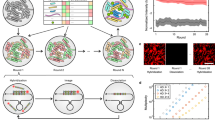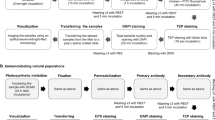Abstract
THE dilution technique is not entirely satisfactory in studying soil algæ. There is no universal medium for their growth, nor can we assume that all species will grow on any artificial medium now in use. The slow growth of algal colonies involves delays of up to two or three months, causing inconvenience in routine work. Filamentous and colonial algæ introduce further difficulties. A single filament or colony can give one or many colonies according to the number of viable pieces formed from it during dispersion. Available data on the number of algæ in the soil cannot therefore be regarded as absolutely certain.
This is a preview of subscription content, access via your institution
Access options
Subscribe to this journal
Receive 51 print issues and online access
$199.00 per year
only $3.90 per issue
Buy this article
- Purchase on Springer Link
- Instant access to full article PDF
Prices may be subject to local taxes which are calculated during checkout
Similar content being viewed by others
Author information
Authors and Affiliations
Rights and permissions
About this article
Cite this article
TCHAN, Y. Counting Soil Algæ by Direct Fluorescence Microscopy. Nature 170, 328–329 (1952). https://doi.org/10.1038/170328b0
Issue Date:
DOI: https://doi.org/10.1038/170328b0
This article is cited by
-
Botanical limnological methods with special reference to the algae
The Botanical Review (1957)
-
Direct Microscopy for Study and Count of Soil Protozoa
Nature (1954)
Comments
By submitting a comment you agree to abide by our Terms and Community Guidelines. If you find something abusive or that does not comply with our terms or guidelines please flag it as inappropriate.



